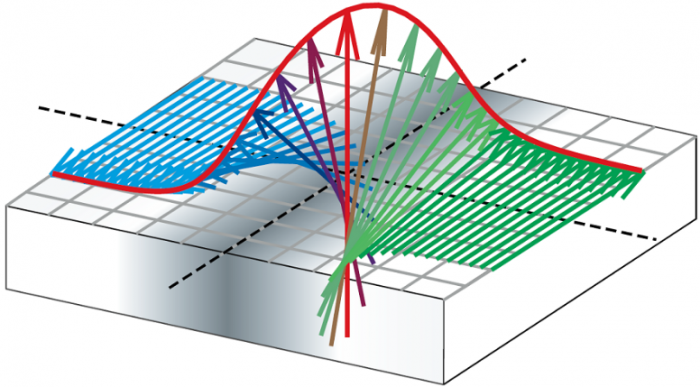A domain pattern with multiple polar domain walls in non-polar CaTiO3 from a review article: “Domain-wall engineering and topological defects in ferroelectric and ferroelastic materials” highlighted the front cover of the November issue of Nature Reviews Physics.
Worldwide collaboration including current and former members of the Department of Dielectrics has recently come with a topical review article [1] highlighting new prospects of structural domain walls – atomically thin objects occurring within the ferroelectric and ferroelastic materials for the same principal reasons as the ordinary knots can be found on ropes and cords.
The paper deals with exotic polarization profiles that can arise at domain walls (see Fig. 1) and with the different mechanisms that lead to domain-wall polarity in non-polar ferroelastic materials like in polar domain walls in non-polar CaTiO3 (see its domain pattern in Fig. 2). The emergence of energetically degenerate variants of the domain walls themselves suggests the existence of interesting quasi-1D topological defects within such walls. A special attention is paid to the fundamental mechanisms responsible for domain-wall conduction in nonconductive ferroelectrics. Finally, authors are drawing prospects of combination of domain walls with transition regions observed at phase boundaries, homo- and heterointerfaces, and other quasi-2D objects, enabling emergent properties beyond those available in today’s topological systems.
Reference
[1] G. F. Nataf, M. Guennou, J. M. Gregg, D. Meier, J. Hlinka, E. K. H. Salje, and J. Kreisel, Domain-wall engineering and topological defects in ferroelectric and ferroelastic materials, Nat. Rev. Phys. 2, 634 (2020).

